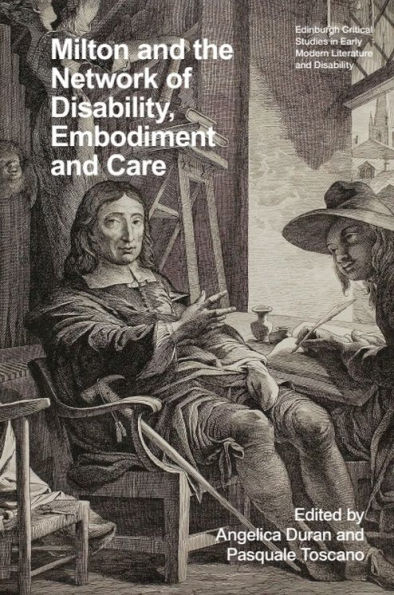Milton and the Network of Disability, Embodiment and Care
The governing questions of Milton and the Network of Disability, Embodiment and Care are threefold: What does reading Milton’s texts – and literature generally – through the theoretical lens of disability, embodiment and care studies (DEC) reveal that was illegible before? How have Milton’s visual and mobility impairments, as well as his artistic representations of human biodiversity, factored into his status as a canonical author? And what insights does bringing a DEC lens to Milton’s body of work and its reception give us into literature and longstanding stereotypes about humans and their cultural and physical environments? The thirteen chapters, Foreword and Afterword of this collection, composed by established and emerging scholars, provide cogent answers by drawing on the contributors’ expertise in various fields. The volume advances what Milton’s texts – from sonnet to epic and political tract to tragedy – can tell us about not only literary representations of human variation, physical and mental, but also cultural responses to disability, embodiment and care that affect all readers – and all people – today.
1147327722
Milton and the Network of Disability, Embodiment and Care
The governing questions of Milton and the Network of Disability, Embodiment and Care are threefold: What does reading Milton’s texts – and literature generally – through the theoretical lens of disability, embodiment and care studies (DEC) reveal that was illegible before? How have Milton’s visual and mobility impairments, as well as his artistic representations of human biodiversity, factored into his status as a canonical author? And what insights does bringing a DEC lens to Milton’s body of work and its reception give us into literature and longstanding stereotypes about humans and their cultural and physical environments? The thirteen chapters, Foreword and Afterword of this collection, composed by established and emerging scholars, provide cogent answers by drawing on the contributors’ expertise in various fields. The volume advances what Milton’s texts – from sonnet to epic and political tract to tragedy – can tell us about not only literary representations of human variation, physical and mental, but also cultural responses to disability, embodiment and care that affect all readers – and all people – today.
125.0
Pre Order
5
1

Milton and the Network of Disability, Embodiment and Care
296
Milton and the Network of Disability, Embodiment and Care
296Hardcover
$125.00
125.0
Pre Order

Product Details
| ISBN-13: | 9781399541459 |
|---|---|
| Publisher: | Edinburgh University Press |
| Publication date: | 12/31/2025 |
| Series: | Edinburgh Critical Studies in Early Modern Literature and Disability |
| Pages: | 296 |
| Product dimensions: | 6.14(w) x 9.21(h) x 0.00(d) |
About the Author
From the B&N Reads Blog
